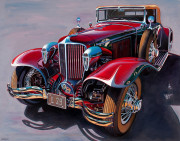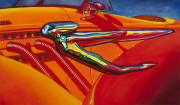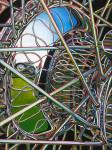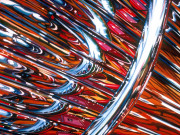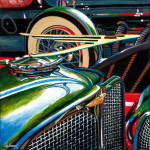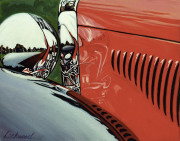Auburn|Cord|Duesenberg
Auburn, Cord and Duesenberg (ACD) came to be known for their advance engineering, performance, bright two-tone colors and beautiful Art Deco styling. The Rich and Famous owned these cars around the world – they were a symbol of success.
Famous models produced were the Auburn Speedster (1935-7), the Duesenberg Model J (1928-37), and the Cord 810/812 coffin nose (1936-7).
Duesenberg automobiles cars were designed to be direct competitors of European cars such as Hispano Suiza, Isotta Frashini, Mercedes-Benz and Rolls-Royce. A Duesenberg won the 1923 French Grand Prix at Le Mans. The Model A was one of the most powerful and fastest cars of its time.
Auburn was a brand of American automobiles produced in Indiana from 1900 to 1936. The Auburn Boat-tail Speedster, could top 120 mph making it a popular model in the Hollywood market.
Due to financial difficulties Duesenberg ( in 1926) and Auburn (in 1925) were acquired by E.L.Cord, who then formed the Cord Corporation as a holding company for his many transportation interests. Cord’s philosophy was to produce truly different, innovative cars. The L29 Cord was the first American production front-wheel drive car and the 810-812 series the first to sport hidden headlamps.
In the end styling and imaginative engineering failed to overcome the fact that these vehicles were too expensive for the Depression-era market and Cord ultimately ceased production of these three marques in 1937.
The company’s Art Deco headquarters in Indiana now houses the Auburn Cord Duesenberg Automobile Museum.
These cars are now very valuable and can be seen at major car events such as Amelia Island and Pebble Beach Concours d’Elegance.

